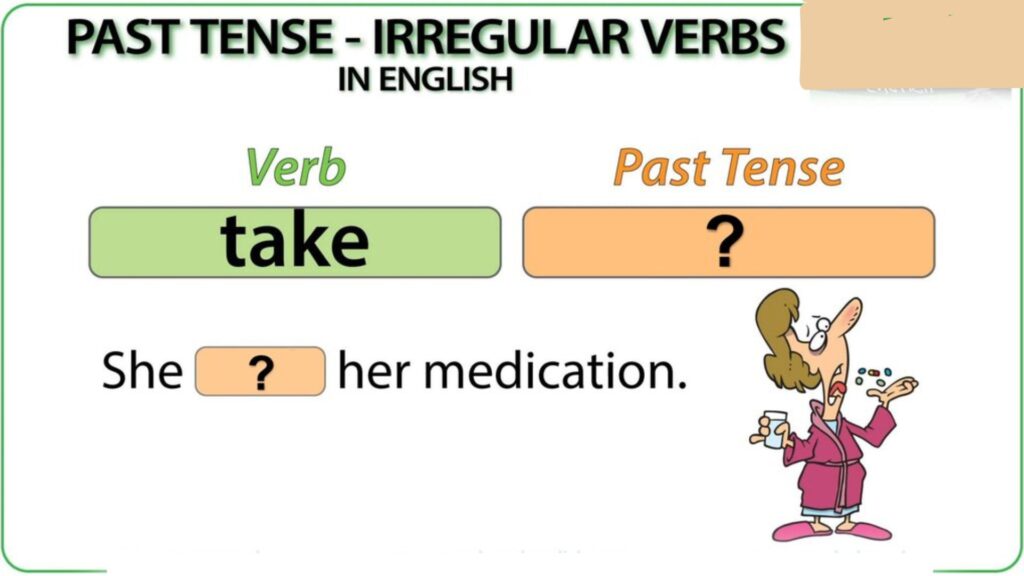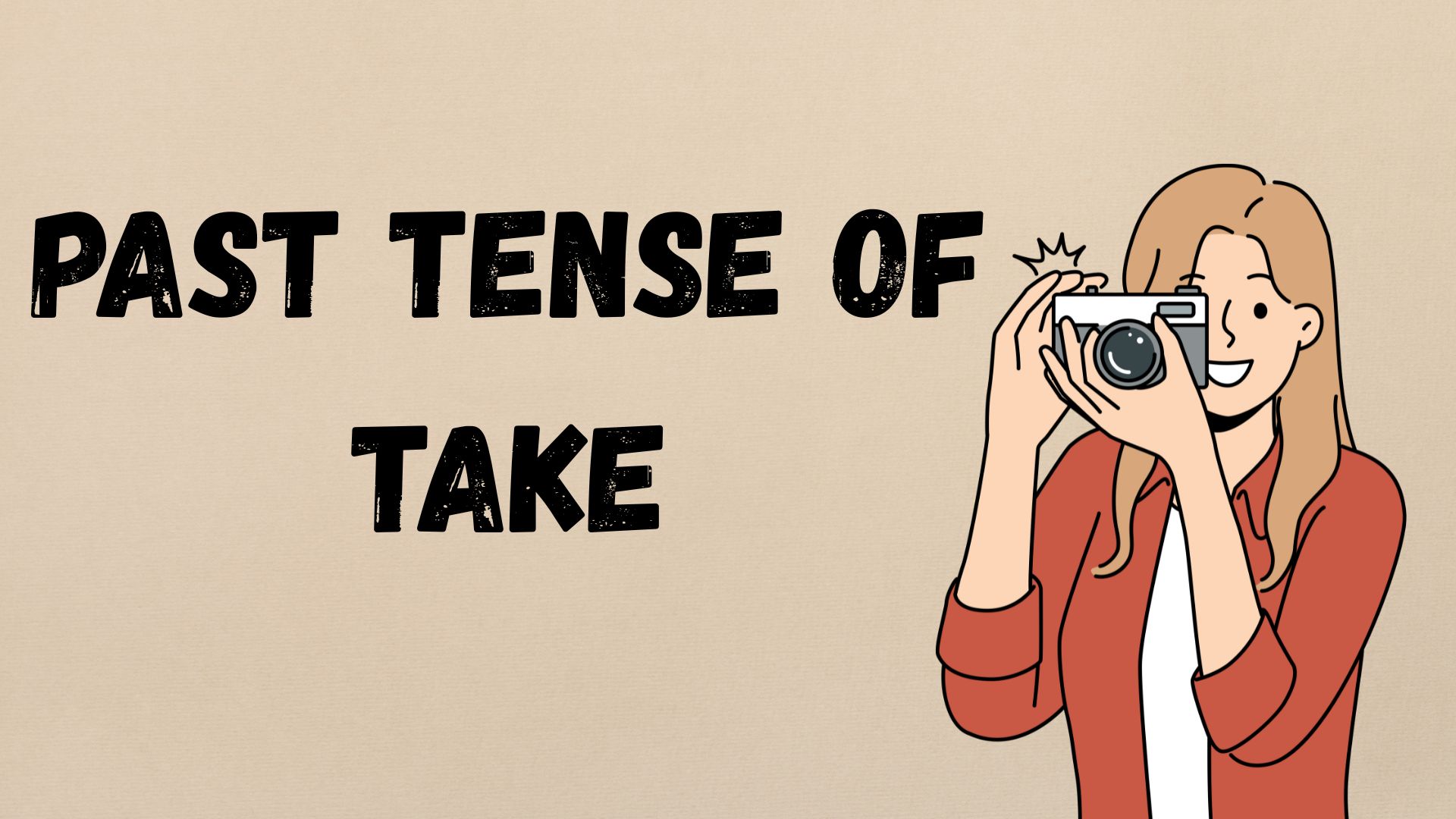Past Tense of Take
Understanding verb tenses in English can feel like trying to solve a puzzle especially when it comes to irregular verbs like “take.” You’ve probably heard people say took or taken in different contexts. So which is correct? Well, that depends on how you’re using it. Let’s break down the differences between take, took, and taken with clear rules, examples, and real-life scenarios (like emails and conversations) to make it all stick.
What Type of Verb Is “Take”?

Before jumping into tense rules, it’s important to know that “take” is an irregular verb. That means it doesn’t follow the regular -ed ending rule you see with verbs like “walk” → “walked.” Instead, it changes form entirely.
Here’s a quick look at the verb conjugation of take:
| Tense | Verb Form |
|---|---|
| Base Form | take |
| Simple Past | took |
| Past Participle | taken |
| Present Participle | taking |
Now let’s dive deeper into each form take, took, and taken so you can use them naturally and correctly.
When to Use “Take”
“Take” is the base form of the verb. It’s used in the present tense when referring to a general action or habit.
✅ Correct Examples:
- I take the bus every morning.
- Do you always take your coffee black?
- They take things way too personally sometimes.
Using “Took” – The Simple Past of Take

Past tense of Take
“Took” is the simple past tense of “take.” You use it when referring to an action that happened at a specific time in the past and is now complete.
✅ Correct Examples:
- I took a vacation last summer.
- Sarah took the last slice of pizza.
- He took the wrong train and ended up in another town.
📧 Scenario Example: Work Email
Subject: Quick Update on the Design Files
Hi Brian,
Just a quick heads-up I took the liberty of organizing the design files into separate folders based on client name. It should be easier to navigate now. Let me know if you need anything else!
Cheers,
Monica
Key takeaway: Use “took” when the action is fully done and dusted, with a time clearly in the past even if it was just a minute ago.
Using “Taken” – The Past Participle of Take
Now here’s where many people stumble. “Taken” is the past participle of “take,” and it always needs to be used with a helping verb usually “have,” “has,” or “had.”
It’s used in perfect tenses, where the action might have relevance to the present or happened before another event.
✅ Correct Examples:
- I have taken all the necessary precautions.
- She had already taken the call when I arrived.
- They’ve taken everything out of the moving truck.
You cannot use “taken” on its own. Saying “I taken the book” is grammatically incorrect. You need an auxiliary verb.
📧 Scenario Example: Team Project Update
Subject: Progress on the Testing Phase
Hey team,
I just wanted to let you know that we’ve taken significant steps forward in the testing phase. All major bugs have been logged, and most are resolved.
Best,
Darren
“Take, Took, or Taken”? Quick Usage Chart

| Form | Tense | Usage Example |
|---|---|---|
| Take | Present | I always take notes during meetings. |
| Took | Simple Past | I took notes during yesterday’s session. |
| Taken | Past Participle | I have taken notes for every session so far. |
Common Mistakes to Avoid
Mistakes often happen when people confuse the simple past with the past participle. Here are a few examples of what not to do and how to fix them.
❌ Incorrect:
- She taken the keys.
- I have took your advice.
✅ Correct:
- She has taken the keys.
- I have taken your advice.
Helpful tip: If you’re using “has,” “have,” or “had,” the correct form is always taken.
Mini Conversation Example
Let’s see how all three forms show up naturally in a conversation:
Lena: Did you remember to take the garbage out?
Dylan: Yeah, I took it out before dinner.
Lena: Great. I’ve taken care of the recycling too, so we’re all good!
This short back-and-forth shows how take, took, and taken flow in everyday life. It’s subtle, but powerful when used correctly.
Other Forms You Might Encounter
You might also hear people use expressions or idioms with these forms:
- Take a break
- Take charge
- Took it personally
- Taken aback
📝 Real-life Example in an Email
Subject: I Was Really Taken Aback
Hi Jessica,
I just wanted to reach out and say I was truly taken aback by your thoughtful gesture. The flowers were lovely and meant a lot. Thank you again.
Warm regards,
Kate
What’s the Past Tense of “Take”? Final Thoughts
So, let’s bring it home:
- Use “take” in the present.
- Use “took” when referring to something that already happened in the past.
- Use “taken” when you need the past participle with a helper verb like has/have/had.
Each form has its place, and mixing them up can confuse your meaning or make your sentence sound off. Knowing the difference between took and taken will give your English a noticeable polish whether you’re speaking, writing, or emailing a client or friend.
💡 Quick Recap
- “I take the train to work every day.” → Present
- “I took the train yesterday.” → Simple past
- “I have taken the train all week.” → Present perfect
Mastering these three forms take, took, and taken might seem tricky at first, but with regular use and attention, they’ll start to feel natural. Keep practicing in real-life scenarios. Try writing a short journal entry or email using all three. You’ll be surprised how fast it clicks.
If you’re ever unsure, remember: if there’s a “have,” “has,” or “had” nearby, taken is your go-to.

